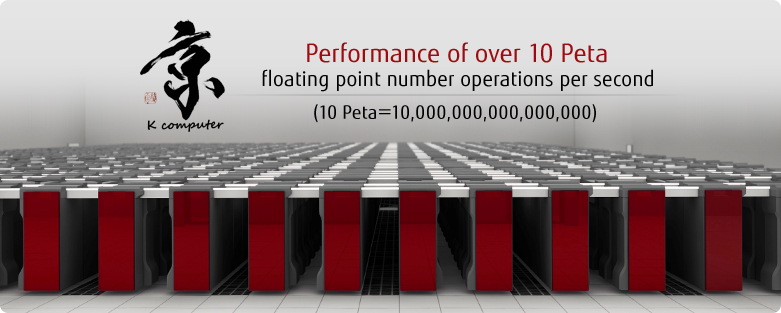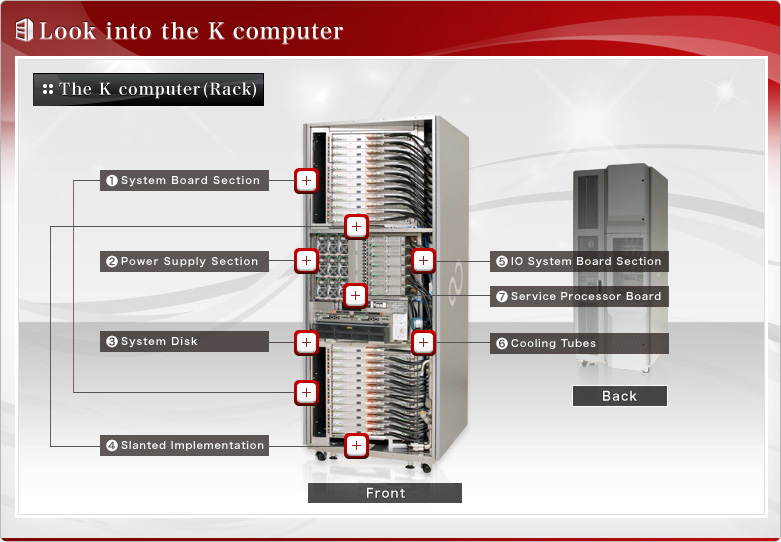Now the world’s fastest SuperComputer is “K” from Fujitsu. Now its processing power is 10.51 petaflops, which is record for human kind! And Japanese government said it is ready to pump another US$1.3 billion into supercomputer development, and its getting ready to start working in Earthquake prediction and many other scientific research.
As announced by Fujitsu, “K” is now the first computer in the world being able to handle over 10 quadrillion calculations per second, or 10 petaflops. To be more concrete, K’s 88,128 CPUs (arrayed over 864 racks) ran continuously for almost 30 hours, achieving a performance of 10.51 petaflops (benchmark in June: 8.162 petaflops). Previously World’s fastest computer was China’s Tianhe-1A.
Uses for the K computer and the Future
As the K computer represents a dramatic leap forward in terms of simulation precision and calculation speed, it can be applied to a variety of fields that use computational science. It holds the promise of contributing to the generation of world-class breakthroughs such as:
# Analyzing the behavior of nanomaterials through simulations and contributing to the early development of such next-generation semiconductor materials, particularly nanowires and carbon nanotubes, that are expected to lead to future fast-response, low-power devices.
# Predicting which compounds, from among a massive number of drug candidate molecules, will prevent illnesses by binding with active regions on the proteins that cause illnesses, as a way to reduce drug development times and costs (pharmaceutical applications).
# Simulating the actions of atoms and electrons in dye-sensitized solar cells to contribute to the development of solar cells with higher energy-conversion efficiency.
# Simulating seismic wave propagation, strong motion, and tsunamis to predict the effects they will have on human-made structures; predicting the extent of earthquake-impact zones for disaster prevention purposes; and contributing to the design of quake-resistant structures.
# Conducting high-resolution (400-m) simulations of atmospheric circulation models to provide detailed predictions of weather phenomena that elucidate localized effects, such as cloudbursts.
Having reached its performance target, the K computer is quickly moving toward completion. RIKEN and Fujitsu will be focusing their energies on developing and assessing system software for the large-scale K computer with the aims of system completion in June 2012 and the official beginning of its shared use in November 2012.
Check The K Computer Home page – here
Know more about the technology – here
All Image Credit and information is from Fujitsu.





